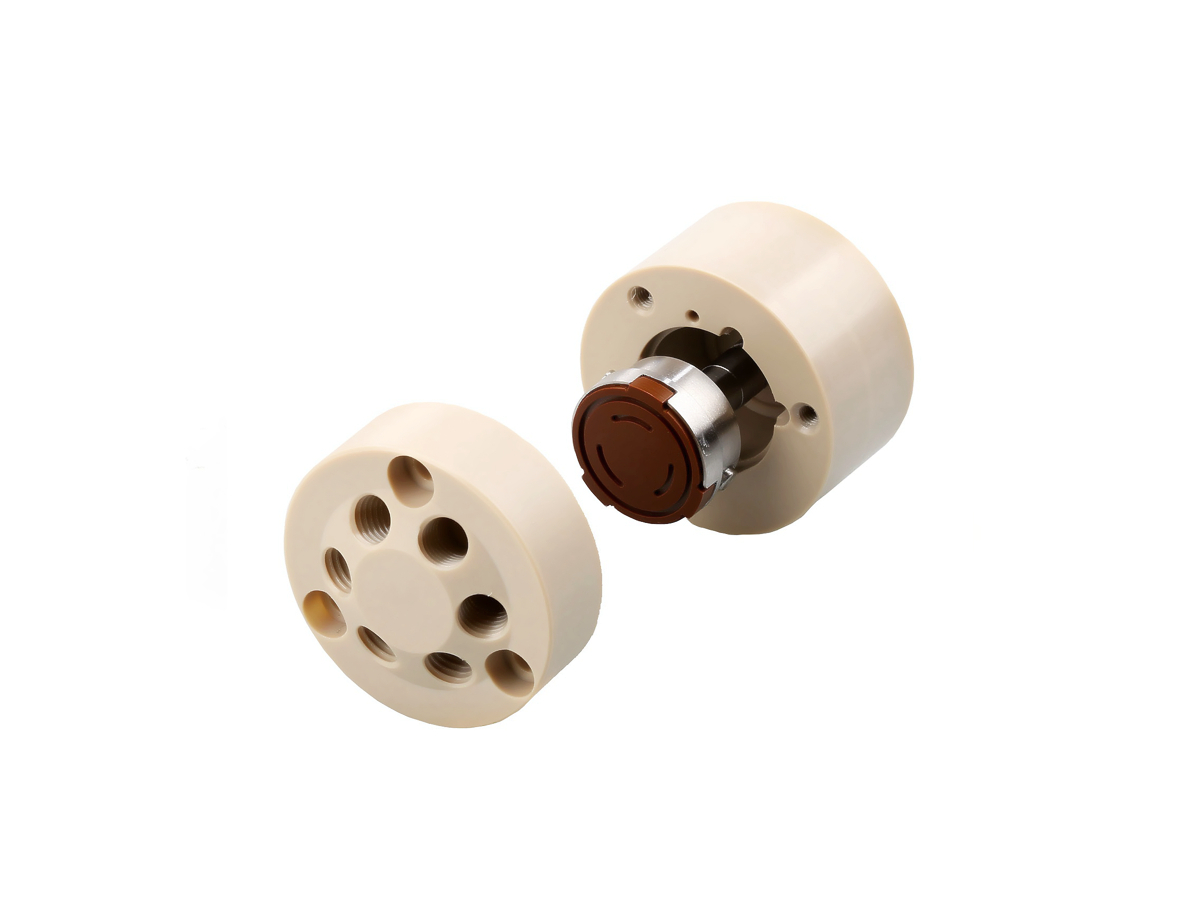Plastic Prototyping with CNC Machining: Versatile Solutions for Custom Designs
Introduction
Plastics offer unmatched versatility, ease of machining, and customization potential, making them ideal for CNC prototyping applications across industries like consumer products, medical equipment, and industrial automation. CNC machining of plastics enables the precise creation of prototypes with intricate geometries, tight dimensional tolerances (±0.005 mm), and superior surface finishes.
Leveraging advanced plastic CNC machining capabilities, companies rapidly validate designs, enhance functionality, and reduce the product development cycle, ensuring accurate and high-quality prototypes for custom applications.
Plastic Material Properties
Material Performance Comparison Table
Material | Tensile Strength (MPa) | Flexural Modulus (MPa) | Density (g/cm³) | Heat Deflection Temp (°C) | Typical Applications | Advantages |
|---|---|---|---|---|---|---|
40-50 | 1600-2300 | 1.04 | 85-100 | Consumer housings, enclosures | Good impact resistance, easy to machine | |
60-70 | 2200-2400 | 1.20 | 130-145 | Transparent parts, medical devices | High strength, optical clarity | |
90-100 | 3800-4200 | 1.31 | 250-260 | Aerospace, medical implants | High-temperature resistance, chemical stability | |
65-75 | 2800-3100 | 1.41 | 90-110 | Mechanical gears, fittings | Excellent wear resistance, low friction |
Material Selection Strategy
Selecting suitable plastics for CNC prototyping involves evaluating mechanical strength, temperature performance, and application-specific requirements:
ABS is widely used for consumer product prototyping due to its machinability, affordability, and reliable mechanical properties (tensile strength up to 50 MPa).
Polycarbonate (PC) is preferred for transparent or optically clear prototypes, combining excellent impact resistance, high strength (up to 70 MPa), and thermal stability (up to 145°C).
PEEK offers outstanding chemical resistance and thermal stability (up to 260°C), ideal for demanding prototypes in aerospace or medical implant applications.
Delrin (Acetal) is chosen for mechanical and precision components requiring exceptional dimensional stability, low friction, and excellent wear characteristics.
CNC Machining Techniques for Plastic Prototypes
CNC Machining Process Comparison
CNC Process | Accuracy (mm) | Surface Finish (Ra µm) | Applications | Advantages |
|---|---|---|---|---|
±0.01 | 0.2-0.8 | Complex enclosures, custom parts | Versatile shaping, rapid production | |
±0.005 | 0.4-1.0 | Cylindrical prototypes, fittings | Accurate and consistent cylindrical shaping | |
±0.01 | 0.6-1.2 | Precision holes, internal features | Precise feature placement, good repeatability | |
±0.005 | 0.1-0.4 | High-tolerance parts, medical devices | Superior dimensional accuracy and repeatability |
CNC Process Selection Strategy
Selecting the appropriate CNC machining method for plastic prototyping requires considering industry standards, component complexity, and precision requirements:
CNC Milling (ISO 2768-m) effectively produces intricate shapes and detailed geometries with tolerances around ±0.01 mm, ideal for custom-designed enclosures and complex plastic components in consumer electronics or medical devices.
CNC Turning (ISO 2768-f) is suitable for precision cylindrical features requiring tight tolerances up to ±0.005 mm, typically used for connectors, bushings, and high-precision rotational fittings in automation equipment.
CNC Drilling (ISO 286-2:2010) precisely positions and creates holes or internal channels to tolerances within ±0.01 mm, essential for assembly alignment and fluidic pathways in intricate plastic components.
Precision Machining (ISO 2768-h) ensures exact dimensional control and surface quality (Ra ≤0.4 µm), critical for prototypes such as medical devices or precision mechanical components requiring stringent mechanical fits.
Surface Treatments for CNC Machined Plastic Prototypes
Surface Treatment Comparison
Treatment Method | Typical Roughness (Ra µm) | Chemical Resistance | Max Temp (°C) | Applications | Key Features |
|---|---|---|---|---|---|
≤0.1 | Excellent | Material Limit | Optical lenses, transparent parts | Smooth surface, optical clarity | |
0.8-1.6 | Good | 80°C | Consumer products, prototypes | Custom colors, improved appearance | |
0.4-0.8 | Excellent | 260°C | Chemical-resistant components | Low friction, chemical resistance | |
0.8-1.2 | Good | 120°C | Consumer electronics, automotive interiors | Integrated graphics, durable surface |
Surface Treatment Selection Strategy
Surface finishing methods enhance the aesthetic appeal, durability, and functionality of plastic prototypes:
Polishing achieves excellent smoothness (Ra ≤0.1 µm) for transparent or optical prototypes, essential for components like lenses or medical parts.
Painting provides color customization and improved surface aesthetics, suitable for consumer-facing prototypes and mockups.
Teflon Coating enhances chemical resistance and significantly reduces friction (Ra 0.4-0.8 µm), ideal for prototypes exposed to harsh chemical environments or mechanical wear.
In-mold Decoration (IMD) delivers attractive, durable surface finishes with embedded graphics or textures, ideal for automotive interiors or consumer electronics prototypes.
Typical Prototyping Methods
CNC Machining Prototyping: Delivers precision plastic prototypes within ±0.005 mm tolerance, ideal for validating form, fit, and function.
3D Prototyping: Rapidly produces early-stage concept prototypes with ±0.1 mm accuracy, suitable for iterative design testing and validation.
Rapid Molding Prototyping: Efficiently creates functional prototype batches (±0.05 mm accuracy) for realistic evaluation of performance and assembly.
Quality Assurance Procedures
CMM Inspection (ISO 10360-2): Precise dimensional verification ensuring tolerances of ±0.005 mm are met.
Surface Finish Measurement (ISO 4287): Ensuring prototypes achieve surface roughness specifications (Ra ≤0.1 µm to 0.8 µm).
Tensile and Flexural Testing (ASTM D638 & D790): Verifying mechanical properties like tensile strength and flexural modulus according to specified material standards.
Thermal Stability Testing (ASTM D648): Measuring heat deflection temperatures to confirm performance under thermal stress conditions.
Chemical Compatibility Testing (ASTM D543): Ensuring prototypes withstand exposure to chemicals relevant to their intended environment.
ISO 9001:2015 Certification: Adhering to rigorous quality management systems for process traceability and consistent quality output.
Key Industry Applications
Consumer product enclosures
Medical device prototypes
Automotive interior components
Industrial equipment fittings
Related FAQs:
Which plastics are best for CNC prototyping?
What CNC machining methods are ideal for plastic prototypes?
How can surface treatments enhance plastic prototypes?
What quality standards apply to CNC machined plastic parts?
What industries commonly utilize CNC plastic prototyping?

